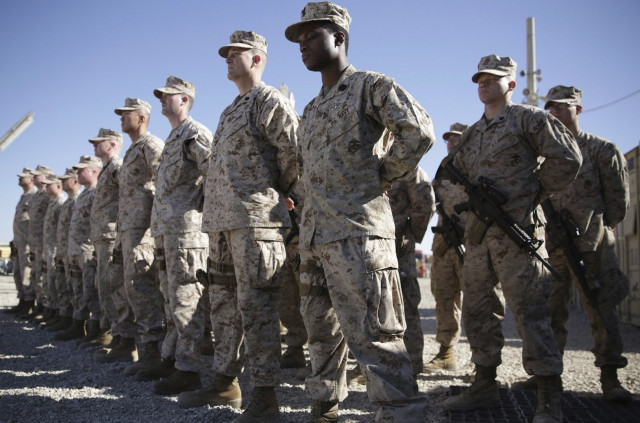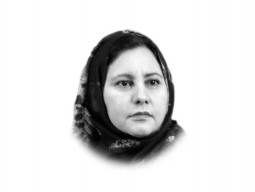
The same sources also revealed that the ‘draft peace deal’ agreed upon stipulated withdrawal of foreign forces from Afghanistan within 18 months of the agreement being signed.
Reciprocally the Taliban gave assurance that the Afghan soil would not be allowed to be used by al Qaeda or Islamic State militants to attack the US and its allies — a major condition of the negotiated settlement by Washington.
The other key provision of the deal encompassed a ceasefire but the timeline has not yet been disclosed. The Taliban are told to be adamant that they would only open talk with representatives of the Afghan government once the ceasefire was implemented.
“If foreign forces are withdrawn and ceasefire is implemented within 18 months, other aspects of the peace process can be put into action,” a Taliban source told a news agency. Other clauses in the draft include an agreement over the exchange and release of prisoners; the removal of international travel ban on several Taliban leaders by Washington; and the prospect of an interim Afghan government after the ceasefire is struck.
Acting shrewdly and to maintain pressure both on the US and the Afghan government, the spokesman for the Taliban denied having reached any agreement on ceasefire and talks with the Kabul administration.
Until the issue of foreign forces was agreed upon, the progress on other issues would be impossible, he quipped. From his statement it appears that their major focus is to ensure withdrawal of foreign forces within the specific timeline. Achievement on that score will be a strategic victory.
Once such a goal is achieved the future course of things will shape the way as they want things to be. The other important clause in the draft is that Baloch militants would not be allowed to use Afghan soil to target Pakistan, a consoling point for Pakistan.
The plans about the interim future set-up and its composition is ambiguous; it is also not clear whether the Taliban would register as a political party and participate in elections or not.
While hopes are high in many circles, President Ghani and his likes are not singing the same chorus. They are averse to the formation of an interim government in Afghanistan at a time when top politicians, including Ghani, have filed their nomination papers for the presidential polls in July this year.
This makes the task a bit difficult as any unilateral withdrawal without settling details of future formation may further lead to chaos than order.
In this backdrop the United States might have achieved its strategic goals by eliminating potential threat to its national security and social order. But the deal appears to be horrendous for national democrats. It may serve the purpose of the US and Europe.
After all they have been tolerating dictatorial and retrogressive regimes in the Middle East as long as these regimes synched with their strategic interests. They just pay lip service to human rights violations and are in different to internecine tribal feuds resulting in deaths as long as they are not posing a threat to them.
Having achieved its goals the US is again walking out the same way as it did in the 80s. The new draft is silent on many issues directly related to the society in Afghanistan.
What will be the state of human rights? What will be the state of education? What will be the political system? Will it revert to the system of Amr ul Maroof Wa Nahi Ul Munkar? What will be status of women? Will they again be caged? Will the females be allowed for education and jobs? These are some of the questions which remain in oblivion due to the euphoria of peace.
The question is: peace at what cost? Will the Taliban and other violent non-state actors lay down their arms; abide by the constitution and law of the land? Will the ultimate use of force be with the Afghan National Security Force? Will it be at the cost of human rights? The fundamental question remains what will be the shape of society with the emergence of Taliban as dominant force in the future set-up of Afghanistan? If such questions are not answered clearly and left to ambiguity, the results may be what we witnessed in Swat and Waziristan in the past.
Many analysts assert that it is not hard to predict what Afghanistan will likely look like. With the religio-political forces in the driving seat the country will likely turn into a theocratic state.
Qazi courts will likely spring up administering justice and awarding punishments. Gender equality and rights of minorities will likely be main casualty. Religion will likely be used as a yardstick to determine all rights.
Pakistan is not an island but part of the mainland, to quote John Donne, and as such cannot remain aloof from the currents blowing from Afghanistan. The trends in Afghanistan will have definite social and political implications for Pakistan. Some religio-political pundit can question, what is the justification for not having a Taliban’s model in Pakistan?
Published in The Express Tribune, February 7th, 2019.
Like Opinion & Editorial on Facebook, follow @ETOpEd on Twitter to receive all updates on all our daily pieces.













COMMENTS
Comments are moderated and generally will be posted if they are on-topic and not abusive.
For more information, please see our Comments FAQ